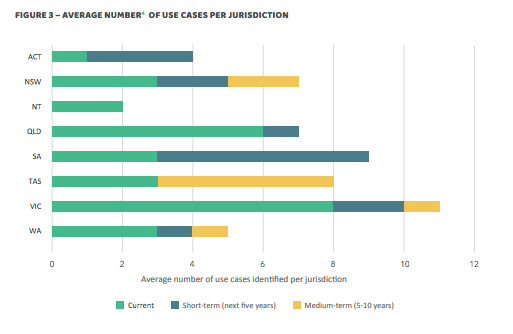In the past, networks services sought poles and wires, today they are seeking investments in the far more mutable area of Information Technology and Communication (ICT). According to Dr Jill Cainey, General Manager Networks at Energy Networks Australia (ENA), it’s something Australian regulators are only just now getting a handle on.
“The way they [Australian Energy Regulator] would assess investment from the network is not really yet up to speed with this kind of increased need for ICT investment – be it monitoring, data management, purchasing data from third parties, etc. – because it’s just not something the regulator has done a lot of,” Cainey told pv magazine Australia.
On Monday, ENA and ENEA Consulting published their report ‘Data opportunities for smarter networks,’ identifying the most important use cases of data in Australia’s energy systems. The intention is to prioritise these use cases and better understand them, as each has key benefits as well as challenges.

In terms of solar PV, smart meters are identified in the report as they key to gathering data that would allow the transition from static export limits to dynamic export limits. Unfortunately, their rollout in states other than Victoria is patchy. Deploying smart meters more widely in jurisdictions across Australia is one of the report’s key findings. The ENA recommends the Australian Energy Market Commission (AEMC) to consider a cost‑benefit analysis to revise the minimum amount of data available to distribution networks from smart meters and the pace of the smart meter roll out.
In recent years, solar inverters and third party PV monitoring providers have become more sophisticated, inserting themselves as yet another available data source – but as with every advancement, the shift has brought fresh complications.
“The network would have to buy the data – so it’s a balance between whether the network should own and operate its own monitoring or is it more effective to buy data from a third party,” said Cainey. The more pressing problem, however, is the question of how that data is presented, since not all inverters or third party monitoring provide the variables in a standardised format.
While there is a best practice guide, true standardisation is yet realised. It is being prioritised though – the major Australian standards for inverters is currently under review with the AS/NZS 4777.2 set to be published next year. Internationally, the IEEE 2030.5 application protocol for smart metering is also in the works.
“If every inverter manufacturer, third party monitoring and smart meter provided a specific dataset in the right format, that would be much easier for everyone,” Cainey continued.
While the end product might be simpler, the path to get there is certainly not. Networks know what data they need today, pointed out Cainey, but predicting the kind of data that will be required as systems become more sophisticated is difficult.
“You have to be very careful about how you set things because you don’t want it to be fixed forever… what we need to do tomorrow is not necessarily covered by the data that we need today.”
According to Cainey, the Energy Security Board (ESB) and the Australian energy market have spent this year working on finding minimum technical standards and standards governance in the DER space. It’s a process that will take a little while to land though. “If we do set standards for inverters say, that’s not just going to impact networks, it’s going to impact installers and manufacturers and so on. It’s not just something you can bring in without proper consultation.
“You have to do it properly and bring everyone on that journey and I think we’re in that process now,” Cainey said.
Cybersecurity
Another key area addressed in the report but still being sorted through in reality is cybersecurity. While Australia already has an industry best practice framework, the federal government is now proposing a revised framework with additional obligations under their Protecting Critical Infrastructure and Systems of National Significance consultation.
Of course, like much else in the data realm there is still lots to be fleshed out. As Cainey notes: “It’s not yet clear what those additional obligations may be over and above the obligations and standards that the industry already meets, nor for those additional security benefits what would those costs be over and above today.”
This content is protected by copyright and may not be reused. If you want to cooperate with us and would like to reuse some of our content, please contact: editors@pv-magazine.com.









By submitting this form you agree to pv magazine using your data for the purposes of publishing your comment.
Your personal data will only be disclosed or otherwise transmitted to third parties for the purposes of spam filtering or if this is necessary for technical maintenance of the website. Any other transfer to third parties will not take place unless this is justified on the basis of applicable data protection regulations or if pv magazine is legally obliged to do so.
You may revoke this consent at any time with effect for the future, in which case your personal data will be deleted immediately. Otherwise, your data will be deleted if pv magazine has processed your request or the purpose of data storage is fulfilled.
Further information on data privacy can be found in our Data Protection Policy.